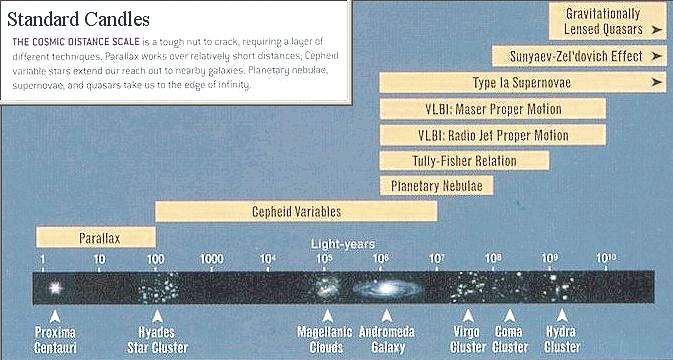We have seen how we can use parallax to find out how far away nearby stars are. What about stars further away from where the parallax angle is too small to be measured accurately or even detect?
There are a number of very useful objects in the Universe called Standard Candles. These are objects of known luminosity, i.e. we know their absolute magnitude. By comparing this with their apparent magnitude, we can easily calculate how far away they actually are. Knowing this we also have a pretty good idea of how far away their neighbours are and the galaxies they are in.

One type of standard candle is a Cepheid Variable. The first example of these was discovered in the constellation of Cephius, hence the name.
The absolute magnitude (luminosity) of this type of star varies with time. The first graph below shows how the apparent magnitude (the brightness) changes, getting brighter and dimmer again with a fixed, measurable period. This is to do with the balance between the nuclear and gravitational forces within the star. In most stars, these forces are balanced over long periods, but in Cepheid variables, they seem to take turns, a bit like a mass bouncing up and down on a spring.

There is a clear relationship between the period of a Cepheid variable and its absolute magnitude. The greater the period then, the greater the maximum luminosity of the star. Cephieds typically vary in brightness over a period of about seven days. Delta Cephius, the first discovered, has a period of 5.3 days.
So to find out how far away it is:
1. Measure how long it takes to get brighter and dimmer
2. Use the graph on the right to find its absolute magnitude M
3. Measure how bright it appears (maximum)
4. Calculate how far away it is.
